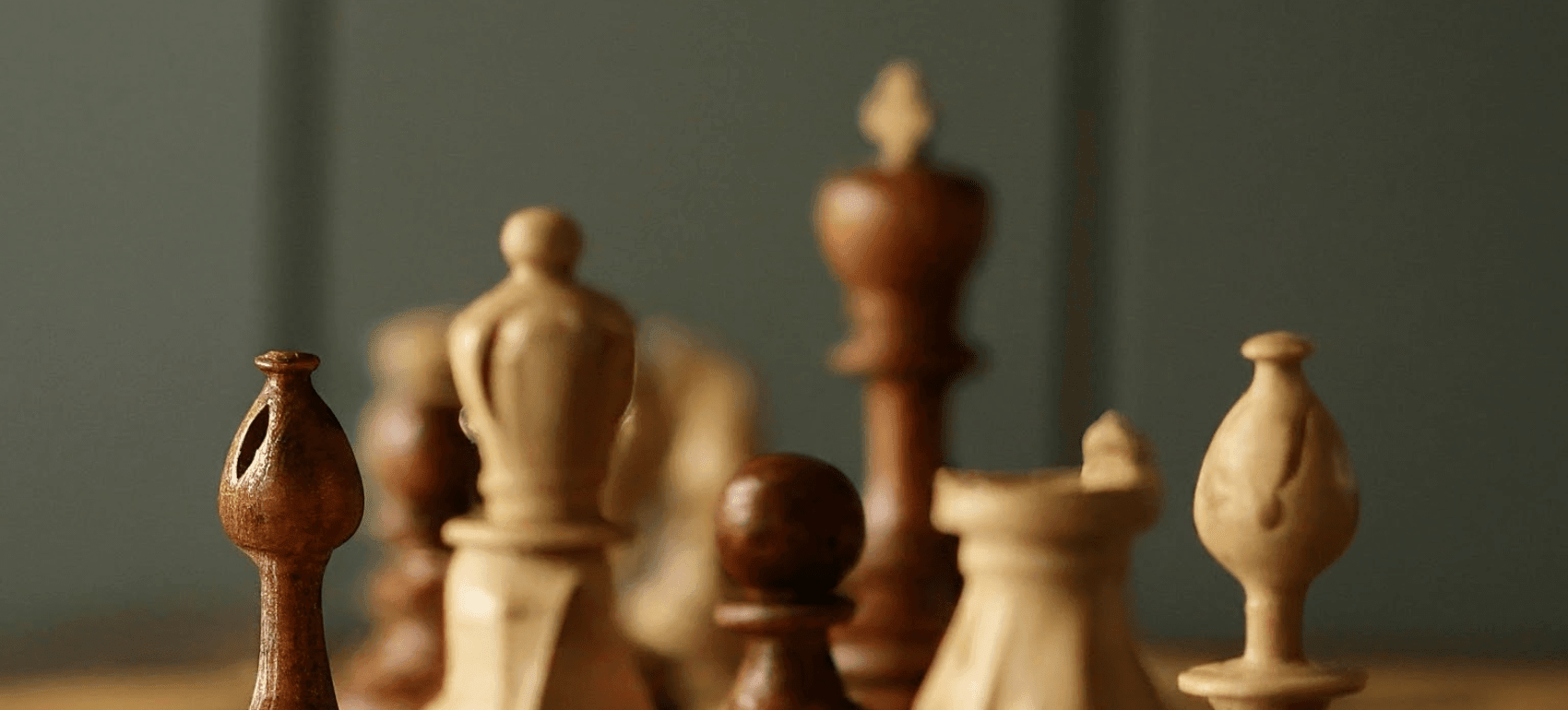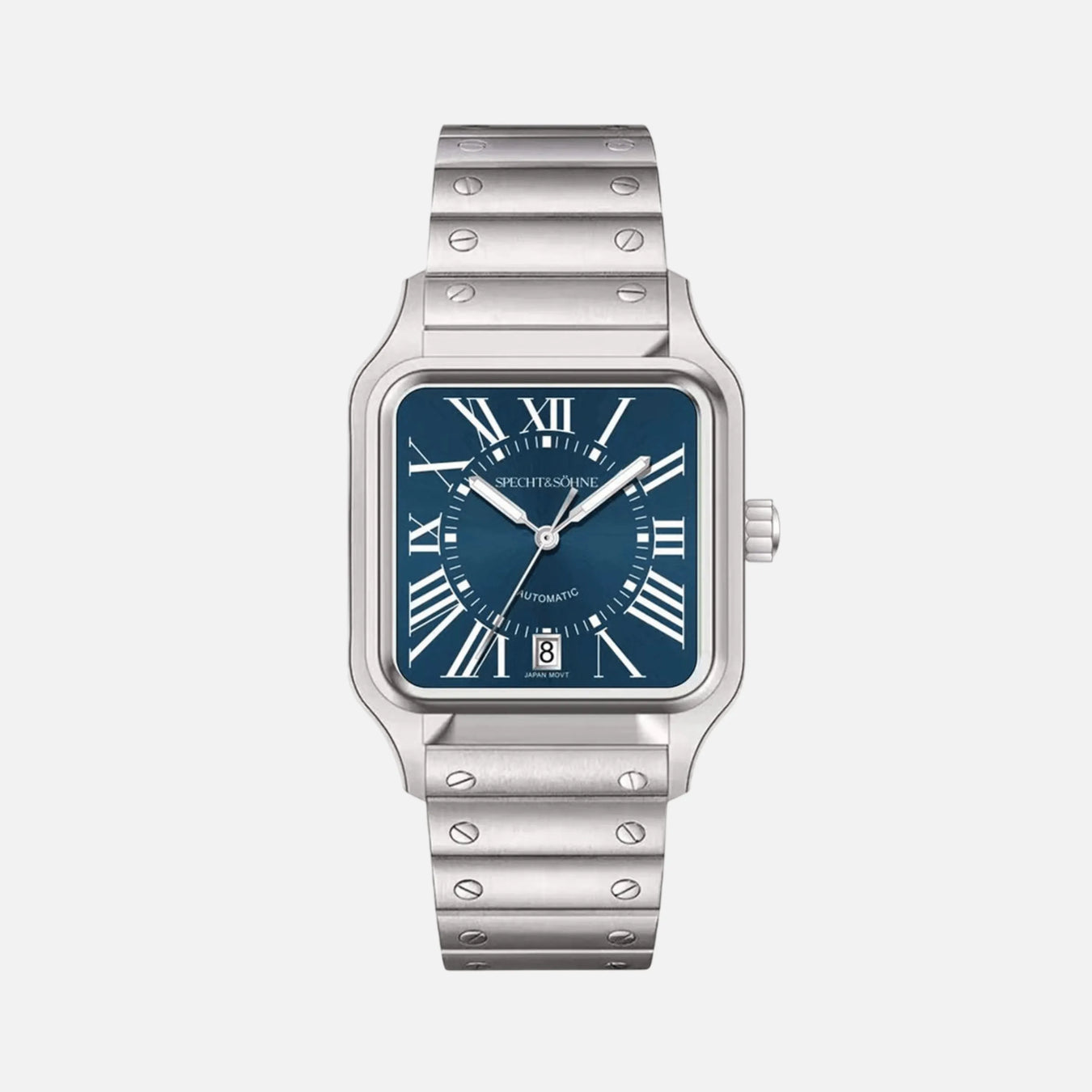
Exploring the Legacy: The Rich History and Cultural Impact of Chess
Introduction to Chess: A Game of Kings and Commoners
Chess has transcended time and culture, marking its presence as a distinguished game that entices minds ranging from the regal echelons of kings to the strategic commoner. Initially perceived as a pastime reserved for royalty and the upper stratum of society, chess has remarkably democratized to become a universal symbol of intellectual prowess and strategic acumen.
Renowned for its nobility and complexity, the game consists of a set of large wooden chess pieces each assigned specific movements and values, reflecting life’s hierarchy and the diverse roles within it. These luxury chess pieces are not only functional but are often crafted as beautiful chess pieces, rendering them as art. A particular set of wooden chess pieces with artful design, often referred to as art 809125, showcases the marriage between aesthetic appeal and cerebral challenge that chess offers.
Indeed, a thoughtful gift for dad or any chess enthusiast might include such a set. These pieces, crafted with attention to detail and quality, elevate the experience of the game, turning an ordinary match into an extraordinary one. Gifting such beautiful chess pieces signifies not only a celebration of the game itself but also an acknowledgment of its historical significance and cultural impact.
From casual players to grandmasters, chess continues to fascinate and challenge players of all levels. Its legacy stretches from ancient origins to today’s digital interfaces, evolving continuously while maintaining the core of its allure—a battlefield for the mind where each move can spell triumph or defeat, transcending social standings and uniting diverse individuals through the shared love for the game.
Ancient Beginnings: Unveiling Chess’s Early Roots
Chess, with its strategic complexity and intellectual allure, began as an ancient game that has traversed through civilizations, leaving a profound cultural imprint. The genesis of chess is believed to be in India during the Gupta Empire around the 6th century, known initially as “chaturanga,” a Sanskrit term translating to ‘four divisions of the military’. This reflects the game’s mimicry of battle, with infantry, cavalry, elephantry, and chariotry represented on the board as what evolved into pawns, knights, bishops, and rooks.
The game’s journey westward transformed it significantly. By the 10th century, ‘shatranj’, as it was known in Persia, was a staple among the nobility. The Persian contribution to chess included the names for certain moves and the introduction of the term “shah mat” (the King is helpless), which eventually became ‘checkmate’ in English.
As Islam spread, chess accompanied it, reaching the Moors in Spain and then the wider European world. By the 15th century, the modern game took shape in Europe, with rules evolving to speed up the gameplay. The queen and bishop acquired greater powers, reflecting the dynamic social and political shifts of the period.
One can find chess depicted in manuscripts and artworks of the medieval era, showcasing its prominence as a symbol of strategic thinking and nobility. A set of wooden chess pieces might now be a revered object, possibly one of luxury chess pieces or a beautiful chess set offered as a gift for a dad who appreciates historical games.
This ancient board game’s early roots are interwoven with socio-political and cultural developments across the globe. An artifact, such as a set of large wooden chess pieces, not only serves as a means for a cerebral challenge but also as a testament to chess’s storied past and its ongoing legacy.
Cultural Journey: The Spread of Chess Across the World
The origins of chess are somewhat a mystery, shrouded in the mists of history, with many believing the game originated in India around the 6th century AD. As a testament to the enduring appeal of chess, the game spread methodically across the globe, each culture embracing and contributing to the development of this cerebral pastime.
In the early days, a set of wooden chess pieces might have been a treasured possession, carefully carved to reflect the societal and military hierarchies of the time. As the game traversed through Persia, the term “checkmate”, from the Persian “Shah Mat,” meaning “the King is helpless,” became a cornerstone of the game’s lexicon.
When the Moors invaded Spain, chess entered Europe, heralding a new chapter in the cultural journey of chess. By the 15th century, modern rules resembling today’s game began to take shape, influencing nobility and commoners alike. The Renaissance saw an explosion of creativity in chess piece design, elevating the game to artistic heights, as evidenced by luxury chess pieces crafted for the elite.
Chess continued its global march through the ages. By the 19th century, it was embedded in the café culture of Europe, giving birth to professional chess tournaments. Large wooden chess pieces graced grand parlors and sparked international rivalries that captivated the world.
Today, chess is universally acclaimed as an intellectual sport, embodying strategic thinking and cultural refinement. It’s not uncommon to see a set of beautiful chess pieces on display as a symbol of cultural sophistication or gifted as a cherished “gift for dad” on special occasions.
As a cultural phenomenon, chess transcends borders, languages, and social strata, uniting enthusiasts in a timeless dance of minds across the checkered board. This spread of chess across the world highlights the universal language of strategy and skill, making it one of history’s most pervasive and beloved games.
Intellectual Renaissance: The Role of Chess in European History
The cultural tapestry of Europe is rich with the strategic threads of chess, a game that has influenced the intellectual and cultural proliferation known as the Renaissance. Throughout this period, chess served not only as a pastime for the nobility but also as a tool for strategic thinking, diplomatic relations, and cultural exchange.
Primarily, chess was an educational instrument among the European elite. It honed strategic planning and critical thinking, skills closely associated with the intellectual prowess of Renaissance thinkers. The game’s complexity made it an ideal platform for the exercise of military and political acumen, which was instrumental in the era’s emphasis on humanist education.
In the intricate courts of Europe, a set of large wooden chess pieces weren’t mere playing tools; they were elaborate works of art. Luxury chess pieces became coveted items, exemplifying the era’s merging of intellectualism with artistic expression. Craftsmen competed to create the most beautiful chess pieces, often commissioned as a gift for a nobleman or a crowned head, resulting in the creation of various unique and priceless sets, such as the famous art 809125 set.
Furthermore, chess facilitated international correspondence and camaraderie among Europe’s rulers and intellectuals. The common language of chess enabled disparate cultures to engage in peaceful competition and dialogue. Notably, it served as a diplomatic gift often exchanged between rulers, symbolizing mutual respect and intellectual kinship.
Additionally, texts and manuscripts on chess strategy were widely disseminated and studied, contributing significantly to the printing and spread of literary works. Treatises on chess supposedly reflected the strategic intricacies of war and governance, enriching the intellectual climate of the time.
The Renaissance, marked by a ceaseless quest for knowledge and refinement, found an enduring companion in chess. Its role in shaping the intellectual contours of European history is undeniably profound, highlighting the game’s eternal allure and cultural significance.
Symbols on the Board: Chess and its Socio-Political Significance
Chess, a game of infinite possibilities, stretches beyond a set of wooden chess pieces artfully arranged on a board; it manifests a microcosm of societal and political dynamics. The checkered squares and the stylized pieces have long been emblematic of strategic thinking, class structures, and the complexities of power.
Historically, chess has been a royal pastime, often used to teach princes the art of war and governance. A set of large wooden chess pieces was not merely a gaming accessory but a representation of the battlefield, where pawns symbolized infantry, knights signified cavalry, and other pieces stood for various ranks and functions within an army. This correlation provided an abstract reflection of feudal hierarchies, projecting the socio-political landscape onto the 64 squares of the chessboard.
In modern times, the luxury chess pieces serve as an allegory for political struggles, showcasing the tension between individual prowess and the overarching strategy. Chess mirrors the delicate balance of power in global politics, where every move can have profound implications and unintended consequences. Leaders are often likened to chess grandmasters, required to anticipate the opponent’s strategy, commit to long-term plans, and adapt to the evolving geopolitical tableau.
As a beautiful chess piece might signify a gift for a beloved father, so chess embodies the exchange of cultural gifts between civilizations. It has traversed borders and epochs, carrying within it the echoes of ancient stratagems and contemporary dilemmas. The popularity of chess in educational and correctional programs underscores its potential for teaching critical thinking, patience, and problem-solving skills—attributes essential for navigating the intricate social and political webs of modern society.
Notwithstanding its recreational value, chess remains a powerful metaphor for the socio-political chessboard, where individuals and states vie for advantage in a game as timeless as human ambition itself.
Chess Masters Through the Ages: Notable Figures and Grandmasters
Chess, with its intricate strategies and complex tactics, has been a canvas for some of the most brilliant minds throughout history. These masters of the game have left a lasting impact on chess culture, both through their games and personalities, and have inspired a set of wooden chess pieces art 809125 that captures the essence of the chess legends.
Earliest recognizable figures in chess include the likes of Ruy López de Segura, a Spanish priest and one of the first chess theorists, and François-André Danican Philidor, whose 18th-century treatises on chess posited that pawns were the soul of chess. The 19th century saw the emergence of Wilhelm Steinitz, often dubbed the “Father of Modern Chess,” who laid foundational theories of positional play and became the first official World Chess Champion.
In the 20th century, names such as José Raúl Capablanca and Alexander Alekhine reigned supreme with their unparalleled skill, paving the way for the intense rivalry between Anatoly Karpov and Garry Kasparov during the Cold War era. This period marked a peak in public interest in chess, thanks to their epic battles over the chess board.
Later, the supernova talents like Bobby Fischer, whose 1972 World Championship win was akin to a political chess match during the height of the Cold War, showed how chess can transcend the board and become a global phenomenon. His eccentric personality and indomitable style are often symbolized in luxury chess pieces that serve as a reminder of his legacy.
Contemporary chess grandmasters, such as Magnus Carlsen, continue to innovate and influence the game. The current era also showcases beautiful chess pieces often used to commemorate the legacy of grandmasters, becoming a precious gift for dad or any chess enthusiast, embodying the grandeur of chess history.
These exemplary individuals are the lifeblood of chess history, their stories woven into each cleverly carved knight and skillfully strategized rook. From educational chess books to a set of large wooden chess pieces, their influence can be felt throughout the chess world, making their mark on every player from the casual to the keen grandmaster.
Modern Chess Dynamics: The Influence of Technology and AI
The game of chess, with its intricate strategies and complex thinking, has been transformed by the advent of technology and Artificial Intelligence (AI). Once played with a set of wooden chess pieces art 809125, the game has now ventured into the digital realm, where large wooden chess pieces luxury editions are less common than their virtual counterparts. In this evolved space, beautiful chess pieces gifted for dad have been replaced by sophisticated software capable of analyzing millions of moves per second.
AI has not only changed how players practice but has also altered the very fabric of chess strategy and theory. The pinnacle of AI’s influence is best exemplified by programs like AlphaZero, which taught itself chess and soon started outperforming human grandmasters. These AI systems demonstrate unparalleled strength in positional understanding and tactical awareness, pushing human players to explore new avenues of play, often focusing on deeply strategic, less calculatory approaches to outmaneuver their silicon counterparts.
The intersection of chess and technology extends to how the game is taught and consumed. Online platforms now allow for immediate access to expansive databases of historical games, opening up learning and analytical opportunities previously unimaginable. Tools for real-time analysis enable players to scrutinize their game, immediately recognizing tactical oversights and strategic missteps.
AI in chess has also become a source of entertainment, with computer engine battles streamed to eager audiences. Spectators can witness the sublime depth of the game as cutting-edge algorithms clash, each move critiqued and pondered upon by a global audience. The future of chess, influenced by technology and AI, holds promise for continued evolution, ensuring that this ancient game remains relevant and exhilarating in a modern context.
Cinema and Literature: How Chess Has Been Portrayed in Arts
Chess, a game of incredible depth and strategy, has not only captivated players across the globe but has also intrigued the creative minds in literature and cinema. Its portrayal in these fields often transcends the mere game, symbolizing complex human emotions and socio-political commentary.
In literature, chess often characters’ psychological states and confrontations. Classic examples include Lewis Carroll’s “Through the Looking-Glass,” where chess serves as the narrative structure for Alice’s adventure, and Stefan Zweig’s “The Royal Game,” which uses chess as a metaphor for the psychological impact of the Nazi regime on individuals.
Films, too, have utilized chess to great effect. The image of a set of wooden chess pieces, artfully shot, often conveys a tense atmosphere, as seen in Ingmar Bergman’s “The Seventh Seal,” where a knight plays chess with Death. This allegory beautifully illustrates the human struggle with mortality and destiny.
Modern cinema continues this trend. For instance, in the Harry Potter series, the wizard’s chess scene stands out as a set of large wooden chess pieces come to life, transforming the game into a real-life battle with high stakes, correlating to the characters’ journey and courage.
Offering a more intimate viewpoint, a film like “Searching for Bobby Fischer” presents chess as a conduit for personal growth and familial relationships, much like a beautiful chess piece can be a gift for dad, carrying sentimental value beyond its function in the game.
As a luxury item on screen, such as in the James Bond classic “From Russia with Love,” chess pieces showcase sophistication and intelligence. Portraying chess in arts has thus long been a way to delve into themes of power, elegance, and intellect, aligning with the perception of the game itself.
Educational Powerhouse: The Cognitive Benefits of Playing Chess
Chess, often considered the game of kings, has transcended its royal origins to become a global phenomenon. In the realm of cognitive development, it stands as an unparalleled educational tool. The game’s intricate nature demands a high level of intellectual engagement, providing a rigorous workout for the brain.
Studies have indicated that regularly engaging in chess can lead to improved memory, owing to the player’s need to recall the complex rules and the vast number of possible positions. As players navigate through a set of wooden chess pieces, strategizing and predicting future moves becomes second nature, enhancing their analytical thinking and problem-solving skills.
In the context of a child’s educational growth, introducing chess at a young age can have a pronounced impact on their ability to concentrate. Amidst the concentration required to maneuver large wooden chess pieces across the board, children learn to focus their attention for extended periods, a skill that is transferable to academic pursuits.
Moreover, the principles of chess promote creativity. Each game is likened to an unfolding narrative where players chart their unique course of action, akin to creating art from a standard palette. The beauty of chess pieces, whether they are luxury chess items or a more modest set, contributes to the aesthetic appeal and enjoyment of the game, further stimulating the mind.
For individuals contemplating a meaningful gift, a beautiful chess set can serve as both an intellectual stimulus and a cherished heirloom. A gift for Dad, for example, might include a finely crafted chess set that encourages cognitive engagement while reinforcing familial bonds through shared strategic gameplay.
The impact of chess on cognitive functions cannot be overstated. Its legacy as an educational powerhouse is sustained by generations of players who have experienced firsthand its intellectual benefits.
Gender and Chess: Breaking Barriers and Pioneering Players
Historically, chess has been seen as a male-dominated sport, its grandmasters and champions often a lineup of men. But as a set of wooden chess pieces are arranged for a new game, so do the gender dynamics within the chess world continue to evolve and shift.
Women have been playing and excelling at chess for as long as the game has existed. Still, in the modern era, breaking into the upper echelons of the chess world has been a monumental challenge. The gender gap in chess is notable; however, female players have been consistently dismantling stereotypes and demonstrating that prowess on the chessboard knows no gender.
Pioneering players like Vera Menchik, the first Women’s World Chess Champion, set the stage for future generations by displaying exceptional skill and tenacity. Similarly, Judit Polgar, often considered the greatest female chess player of all time, broke numerous records by competing—and winning—against top male competitors, refusing to be confined to women-only tournaments.
Efforts to cultivate talent have seen initiatives such as gender-specific tournaments, mentorship programs, and scholarships aimed at women. These opportunities help create an environment where talented female players can polish their skills with luxury chess pieces, aiming to be the next name in the pantheon of chess legends.
Moreover, aesthetic contributions like the design of beautiful chess pieces and tailored chess sets - such as a set of large wooden chess pieces - contribute not just to the personal collection of a passionate player, perhaps a gift for dad, but also symbolize the inclusive and diverse nature of the game’s evolving community.
As barriers continue to be broken, the narrative of female achievements in chess becomes richer, inspiring the next generation of girls and women to see themselves as potential grandmasters, pushing the limits of what is possible on the 64 squares of the chessboard.
Chess as Soft Power: Its Role in Diplomacy and International Relations
Throughout its storied history, chess has transcended the boundaries of simple board gameplay, evolving into a tool for soft power in diplomacy and international relations. The game, characterized by a set of wooden chess pieces artfully crafted, has become a universal language of strategic thinking and cultural exchange. It is not uncommon for diplomats to wield chess as a means of communication—indirectly sharing and demonstrating strategic prowess.
Considering its intellectual prestige, chess often finds its place in the backdrop of diplomatic events where displays of a set of large wooden chess pieces or luxury chess pieces are not mere decorations but subtle symbols of cerebral might. When states gift luxurious chess sets, such as those which could be described as a ‘gift for dad’, they are often symbolic of respect, hinting at a desire for an intellectual partnership and mutual understanding, far beyond what normal diplomatic gifts might convey.
- The role of chess in fostering dialogue and building bridges has been evidenced by historic moments, such as the famed 1972 World Chess Championship dubbed ‘The Match of the Century’ between Bobby Fischer and Boris Spassky, which took place at the height of the Cold War.
- Chess tournaments have also served as venues for discreet discussions between nations, offering an environment conducive to soft diplomacy.
- In countries where direct political contact may be tense or forbidden, chess offers an apolitical platform for interaction.
- The image of two diplomats or world leaders hunched over a chessboard serves as a powerful metaphor for negotiation and cerebral engagement.
Chess, embodied by beautiful chess pieces and strategic depth, continues to serve as a bridge in international relations, thus reinforcing its role as a symbol of soft power and cerebral diplomacy in the modern world.
Reflections on Strategy: How Chess Shapes Military and Business Tactics
The intricate ties between chess, with its roots as a war simulation, and the modern battlefields of military and corporate strategy cannot be understated. The parallels begin with the chessboard itself, often likened to a battleground where every move can pivot the game from triumph to defeat. Military leaders throughout history have esteemed chess as a tool for honing strategic thought, assessing an opponent’s tactics, and contemplating the dynamic balance between risk and reward.
In military strategy, analogies to chess are prominent. Commanders speak of feints and diversions, strategic positioning, and the element of surprise, leveraging knowledge that can be gleaned from a set of wooden chess pieces artfully arrayed on the chessboard. The game’s emphasis on understanding the terrain, as represented by the board, and the capabilities of different pieces, reflects how military resources and units are deployed and maneuvered.
In the business domain, a realm likened to the combat zone for its competitiveness, chess provides valuable guidance as well. Executives imbibe lessons from chess to outmaneuver rivals and secure a market advantage. The game teaches patience, foresight, and the significance of anticipating competitors’ moves. Decisions in the boardroom echo chess strategies, where sacrificing short-term gains for a larger strategic position could make the difference between success and failure.
Moreover, attributes of a set of large wooden chess pieces bear symbolic parallels to corporate hierarchies. Just as each piece has its unique capabilities and limitations, so do different roles within a company contribute distinctively to its objectives. Leaders recognize that, much like a luxury chess piece, they must harmonize the diverse functions and talents within their teams to engineer company triumphs.
Lastly, as a beautiful chess piece can be a gift for dad, brimming with potential moves and strategies, so can the knowledge of chess be a gift to the strategic thinker – a treasure trove of lessons applicable in the war rooms and boardrooms where today’s battles are fought and won.
Preserving the Legacy: The Conservation and Promotion of Chess Today
Chess, a game with an illustrious history originating over fifteen centuries ago, has evolved beyond its ancient roots, becoming a beacon of intellectual competition and global interconnectedness. Today, the responsibility of preserving the game’s legacy is shared by various organizations and enthusiasts who work tirelessly to conserve the cultural heritage of chess and promote it to new generations.
Foremost among conservation efforts is the preservation of historical chess sets, including a set of wooden chess pieces, art 809125, which are regarded as invaluable cultural artifacts. Museums and private collectors alike seek to maintain these pieces not only as remnants of the past but also as exemplifiers of the craftsmanship and societal values during the periods they were made. Providing intricate care, experts restore and protect these beautiful chess pieces, ensuring their longevity for future admirers.
Chess promotion involves the production of luxury chess pieces and sets, which cater to a niche market of collectors and aficionados. Such sets often serve as an emblematic gift for dad, or any individual, symbolizing the timeless appeal and sophistication of the game. A set of large wooden chess pieces represents not just a plaything but an heirloom, passing on the lore of chess from one generation to the next.
Organizations worldwide have also undertaken initiatives to integrate chess into educational curriculums, recognizing the game’s benefits in enhancing cognitive abilities and critical thinking skills. International tournaments and online platforms have further globalized chess, making it accessible to diverse audiences and thus ensuring its contemporary relevance.
Tapping into the digital realm, modern technology has opened new avenues for chess learning and playing, bringing together a global community of chess players. This digital transition has made the game more accessible than ever, while still valuing the tactile beauty of traditional chess sets.
Continuing the legacy of chess in today’s world means embracing both its storied history and its potential for future growth, ensuring that the game remains a cherished global pastime for centuries to come.
Conclusion: The Timeless Appeal of Chess and Its Ongoing Cultural Relevance
Chess, a game of strategic prowess and infinite possibilities, continues to captivate audiences around the world. Its origins, shrouded in the mists of antiquity, point to an enduring legacy that transcends cultures, languages, and eras. Anyone, regardless of age or background, can appreciate the intellectual challenge of the game, embodied in each set of wooden chess pieces artfully crafted to represent the battle of two minds on a checkered board.
The game’s adaptability has allowed it to flourish in various forms. For instance, a set of large wooden chess pieces may grace the squares of an outdoor public park, inviting passersby to engage in playful competition. Meanwhile, luxury chess pieces serve as not only tools of the game but also as decorative heirlooms, speaking to the game’s aesthetic charm as much as its intellectual rigor.
As a beautiful chess piece moves across the board, it carries with it centuries of historical evolution, cultural significance, and personal stories. It’s not merely a game but a connective tissue linking generations. A perfect gift for dad, for instance, represents a transfer of tactical knowledge, strategic thinking, and the joy of human connection.
Moreover, chess remains a poignant metaphor for life’s intricate complexities and the importance of foresight and adaptability. It’s no surprise that it continues to be featured in arts, literature, and film, reflecting its unshakeable cultural relevance. The allure of chess, with its simple yet profound elegance and the depth of character it builds in its adherents, ensures its place as a treasured pastime for the foreseeable future.






